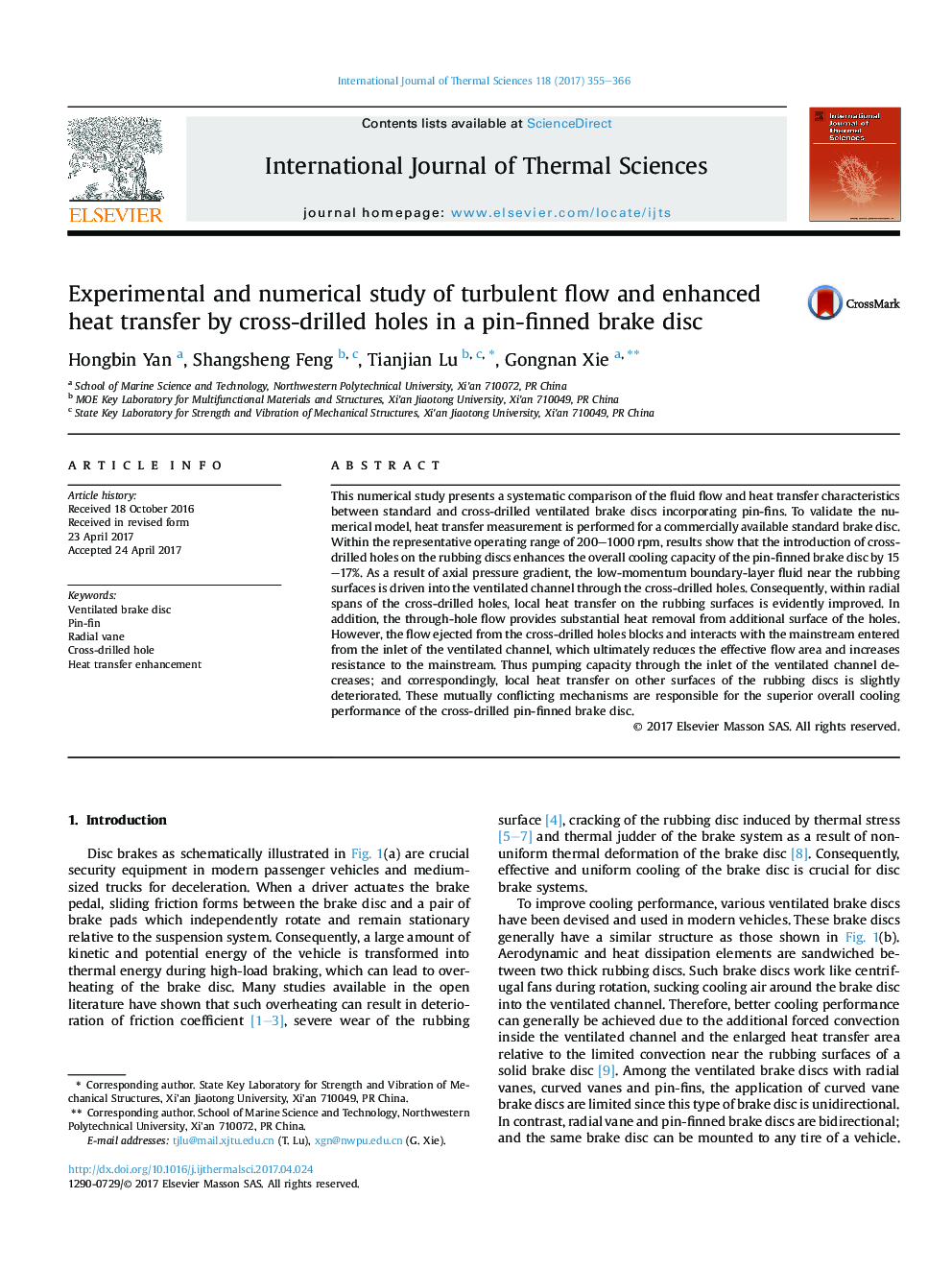| Article ID | Journal | Published Year | Pages | File Type |
|---|---|---|---|---|
| 4995283 | International Journal of Thermal Sciences | 2017 | 12 Pages |
Abstract
This numerical study presents a systematic comparison of the fluid flow and heat transfer characteristics between standard and cross-drilled ventilated brake discs incorporating pin-fins. To validate the numerical model, heat transfer measurement is performed for a commercially available standard brake disc. Within the representative operating range of 200-1000Â rpm, results show that the introduction of cross-drilled holes on the rubbing discs enhances the overall cooling capacity of the pin-finned brake disc by 15-17%. As a result of axial pressure gradient, the low-momentum boundary-layer fluid near the rubbing surfaces is driven into the ventilated channel through the cross-drilled holes. Consequently, within radial spans of the cross-drilled holes, local heat transfer on the rubbing surfaces is evidently improved. In addition, the through-hole flow provides substantial heat removal from additional surface of the holes. However, the flow ejected from the cross-drilled holes blocks and interacts with the mainstream entered from the inlet of the ventilated channel, which ultimately reduces the effective flow area and increases resistance to the mainstream. Thus pumping capacity through the inlet of the ventilated channel decreases; and correspondingly, local heat transfer on other surfaces of the rubbing discs is slightly deteriorated. These mutually conflicting mechanisms are responsible for the superior overall cooling performance of the cross-drilled pin-finned brake disc.
Related Topics
Physical Sciences and Engineering
Chemical Engineering
Fluid Flow and Transfer Processes
Authors
Hongbin Yan, Shangsheng Feng, Tianjian Lu, Gongnan Xie,
